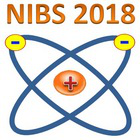Speaker
Prof.
Vadim Dudnikov
(Muons, Inc)
Description
A new, efficient method to produce ultracold negative muon ions is proposed. The muonium atom is made up of an anti muon and an electron and is given the chemical symbol Mu. A second electron with binding energy or electron affinity of 0.75 eV makes the Mu- ion, which is in many ways almost identical to the H- ion that is used for charge-exchange injection into most proton particle accelerators. Muonium negative ions were observed in 1987 [ , ] by interaction of muons with a foil. Using the foil charge-exchange approach, the efficiency of transformation of muons to negative muonium ions has been very low ~10-4. However, by using a hot tungsten or palladium single crystal foil treated by cesium deposition, the production efficiency can be improved up to 50%. The process described here has surface muons focused onto a tungsten or palladium single crystal foil (that can be heated up to 2000 Celsius) and partially covered by a cesium layer up to minimal work function. The negative muon ions can be extracted by a DC electric field and further accelerated by a linac and stripped in a thin foil.
Primary author
Prof.
Vadim Dudnikov
(Muons, Inc)
Co-authors
Mr
Andrei Dudnikov
(BINP)
Dr
Rolland Johnson
(Muons, Inc)

